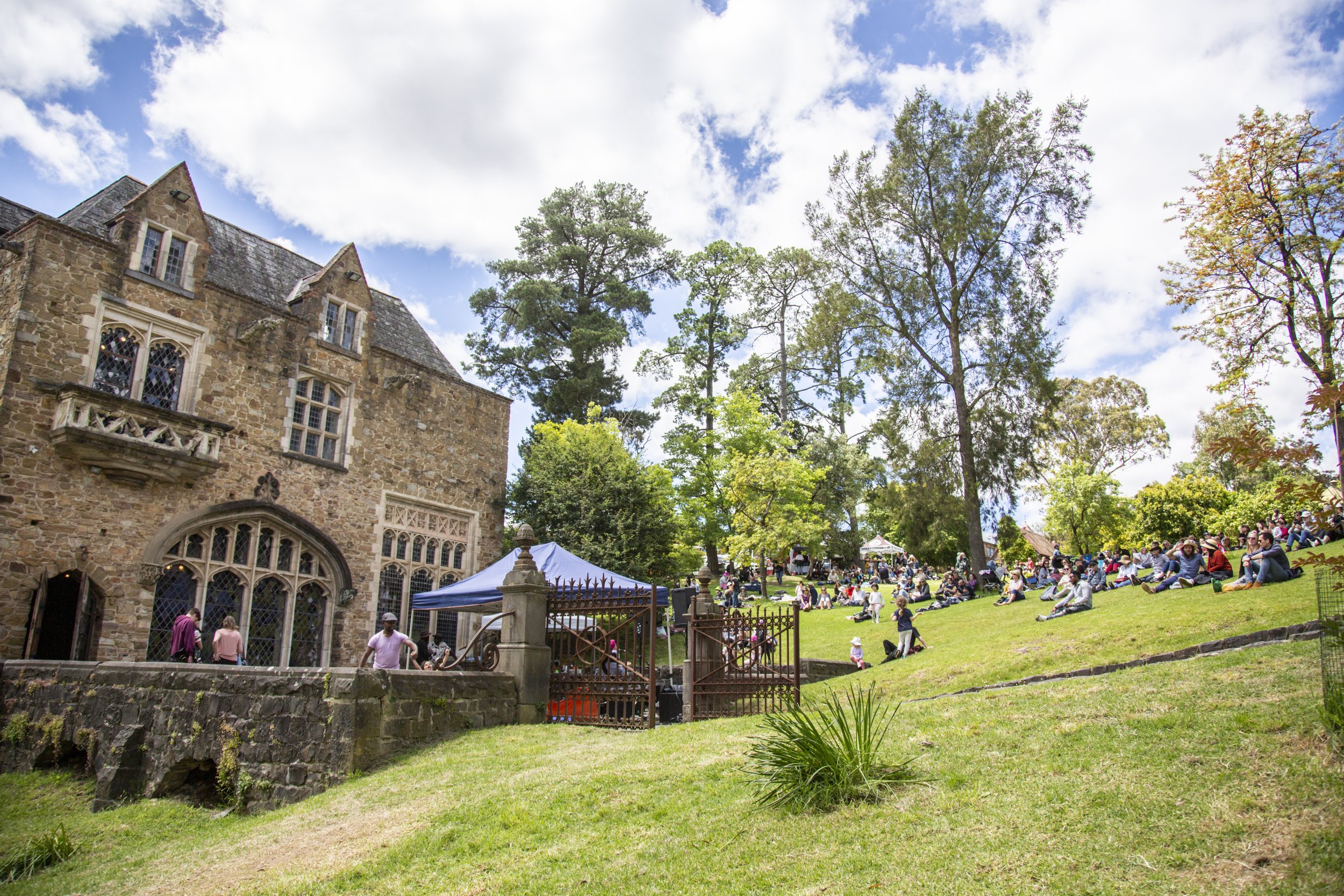
OVERVIEW
Montsalvat’s artist-founder, Justus Jörgensen, took his inspiration from the villages of France, but the Montsalvat he built with artist friends and families, notably the prodigiously talented Skipper family, is fashioned out of the clay and stone of this beautiful Eltham hillside, and pieced together with many remnants of Australia’s architectural heritage. Look through the larger bay window in the Upper Gallery and you might learn that it once graced the Victorian Insurance Building. Lean against the great wooden uprights in the Barn Gallery and you will be told they were once wharf timbers from Wollongong.
A guided tour of Montsalvat is like an archaeological dig into art and architectural ingenuity. And if you look up into the trees you can sometimes see works wrought out of natural materials by twenty-first century artists whose passion for the local environment extends into fashioning its twigs and vines into art to make children stare in wonderment.
Montsalvat prides itself on being a place where art is made and taught as well as exhibited. It has long been home to men and woman whose hands and minds can conjure beauty out of wood, clay, stone, words, charcoal, ink, paint, canvas, metal and marble, and who are adept at passing on their skills to others. Montsalvat offers art classes, studio places and short-term residencies to a wide variety of artists, experienced and aspiring.
And while we guard the privacy of our artists, and provide the space and quiet necessary for them to work, visitors can find what they make in our many gallery spaces, and around Montsalvat’s extensive grounds. In the corner of a walled garden you might come across bulb-like forms of glass emerging from grass. Peek (discreetly) through a studio window and you might see a guitar or a harp or a violin in progress.
In the Barn Gallery you will find a cabinet of exquisite jewellery made at Montsalvat. Matcham Skipper’s sculptures will greet you from the top of pillars, and his monumental ironworks surprise you on walls and ceilings. The faces of Montsalvat artists are carved into bosses in the Bluestone Chapel, and the music from instruments made at Montsalvat echoes all around the grounds.
Such richness cries out to be shared. Once a private preserve, Montsalvat has now evolved into a place to which people from all over Australia come to celebrate, to gather and learn, to mark milestones in their lives, and sometimes to mourn in serene surroundings that console and nourish.
We welcome brides, families who are grieving, student parties, community groups, conference goers, professional filmmakers and casual photographers. Montsalvat offers hospitality and catering in a variety of forms, through our expert events team and our friendly restaurant and courtyard garden. Contact us for further details.
Finally, Montsalvat welcomes all who want to help preserve Montsalvat’s rich heritage and contribute to its vision for a creative future. You can do so easily – by becoming a friend of Montsalvat, a patron, or you can join our wonderful and growing band of volunteers and enjoy hands-on experience of daily working life at Montsalvat, with its many fascinations.
PERMANENT ART & ARCHIVE COLLECTION
Established in 1934, Montsalvat is Australia’s oldest continuous artist community. The Montsalvat art and archive collection contains over 2,000 artworks comprising of a variety of media including paintings, works on paper, sculpture and jewellery.
Many of the founding members of the Montsalvat community contributed works to the collection, with Justus Jorgensen’s oeuvre dating from the 1920s to 1975 being the most prominent. Other artists include Myra, Helen and Sonia Skipper, Helen Lempriere and Lesley Sinclair.
In addition to paintings, there are numerous three-dimensional works, most of which were crafted by Matcham Skipper. Skipper, like his sisters, was an artist who worked in many different mediums, including but not limited to jewellery, sculpture and metalwork. Many of Matcham and Sonia Skipper’s sculptures can be found around the grounds and on the facades of Montsalvat’s historic buildings.
